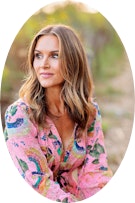3 Beneficial Alternative Therapies for Sensory Processing Disorder
If your child is struggling with sensory processing disorder, the first thing you need to do is find an occupational therapist who specializes in sensory integration therapy. A research-based treatment, sensory integration therapy (OT-SI) aims “to change the neurological functioning in children with SPD so they can manage their responses to sensations and behave in a more functional manner.”
Most kids who receive OT-SI, including my older son, show significant improvements in gross and fine motor skills and in their ability to self-regulate. When H was a toddler, he tested at the 25th percentile for fine motor and the 9th percentile for gross motor.
At four-years-old, we saw huge improvement--he tested at the 37th percentile for fine motor and his gross motor shot up to the 50th percentile. I mean, you should see this kid on his bike, riding his boogie board, and navigating a jungle gym. Five years ago, I couldn’t have imagined saying this, but he is coordinated! As far as his self-regulation skills, well, we’ve still got work to do, but we’ve for sure come a long way since the Stormtrooper Incident!
While OT-SI is the primary treatment for SPD, it’s not the only one. There are many complementary treatments out there and, this may come as a shocker, we’ve tried most of them. Today I want to fill you in on the three alternative therapies that have been most helpful in supporting H’s growth.
1. Cranial Sacral Therapy (CST)
What is it?
Quick biology lesson- The health of our central nervous system (CNS), made up of our brain (the command center) and our spinal cord (the highway), is heavily influenced by the craniosacral system- the membranes and fluid that surround, protect, and nourish our brain and spinal cord.
The theory behind CST is that stress/trauma can cause the the outer layers of the sheaths which carry the protective fluid to our CNS to get “kinked-up,” in turn wreaking havoc on our central nervous system. The result? All sorts of problems including pain, numbness, dizziness, migraines, and, you guessed it, sensory processing disorder.
How Does it Work?
The CST therapist uses gentle touch to evaluate the craniosacral system and locate any restrictions or “kinks” that need to be released. Then, through the continued use of soft-touch techniques, she releases them. Voila! Your now free-flowing craniosacral system can properly do its job of keeping your central nervous system healthy and happy.
Our experience…
H started CST when he was 6 months old. Truth be told, I didn’t know much about it. Ok, I knew nothing. I’d received a recommendation from Cynthia Epps, the angel of a lactation specialist who’d been my lifeline during Hunter’s infancy. I trusted her implicitly and would have done anything she recommended, without question. So, when she told me about Ellen Steinberg, an “amazing” practitioner who did CST for infants, I picked up my phone and made an appointment. A five second Google search was the extent of my research.
H received CST once a week for a year. During his third session, as Ellen used gentle touch to release his “kinks,” H suddenly lifted his legs up, grabbed his toes, and pulled them to his mouth, something he’d never been able to do. I literally gasped. I thought to myself, I have no idea what this woman just did (honestly, during a session it doesn’t look like the therapist is doing anything!), but whatever she’s doing, holy crap, it’s working!!!
Over the course of his treatment, we saw vast improvements in his mobility and self-regulation. After each session, H was exceptionally calm and would usually fall into a deep sleep, something that otherwise eluded him. Used in conjunction with OT-SI, CST has been shown to have the complementary beneficial effect of calming the central nervous system. For more information, click here.
2. Osteopathic Manipulative Treatment (OMT)
What is it?
Different from a traditional western approach, which focuses solely on symptom relief, osteopathic doctors (DO’s) look closely at the interrelationship between the mind and the body (is my anxiety causing my pain or is my pain causing my anxiety? A DO would say, both!) to uncover the root cause of a person’s dysfunction.
They believe that the body has an “innate ability directed towards healing itself.” Their job is to identify and correct anything that’s getting in the body’s way of doing that, including structural problems caused by stress/trauma.
Structural problems caused by stress or trauma?
If you’re thinking… First off, what do you mean by structural problems and secondly, other than witnessing me on the verge of losing my mind twelve times a day, my child hasn’t had any trauma that I’m aware of… Let me explain.
Did you know that there’s a high correlation between birth trauma and sensory processing disorder? Research shows that children with autism are 12 times more likely to have had birth trauma than their non-autistic siblings.
Birth trauma can be caused by a number of things including: premature birth, getting stuck in the birth canal, C-section, use of forceps, prolonged and/or difficult labor, acceleration of labor, induction of labor, and breech presentation. These scenarios can cause damage to the infant’s tissues and organs (structural problems) which may result in later dysfunction.
As one DO puts it, “In allopathic medicine, we are not used to thinking about the possibility that the position of an organ or slightly impeded blood flow or decreased communication between the neuroendocrine immune system could affect our overall well-being. In Osteopathic medicine, these are the scaffolding on which health is rebuilt.”
This is where OMT comes in.
How Does it Work?
Similar to CST, OMT uses a set of hands-on techniques including stretching, gentle pressure, and resistance to identify and correct structural problems in the body as well as any restrictions that could impede the symmetrical development of the muscles, bones and joints.
Our Experience…
H began osteopathic treatment when he was 11 months old. Within the first few minutes of his first session, using gentle touch, our DO (the amazing Dr. Kathryn Gill) determined (without my telling her) that H was a frank breech. How did you know that? I asked. I can’t remember exactly what she said, but it was something about feeling how his bones and joints were positioned. I was impressed.
H saw Dr. Gill every two weeks for a year. In addition to his sensory issues, H had alignment issues with his hips and severe in-toeing. Over the course of his treatment, his alignment and motor issues improved and, much like his experience with CST, he was often more regulated post-treatment. For a child who couldn’t sleep for more than a two hour stretch without waking in hysterics, I marveled at how soundly he’d sleep after receiving OMT. This benefit alone made the treatment worth it!
3. Integrated Listening Therapy (iLS)
What is it?
Based on the concept of neuroplasticity- our brain’s ability to be “rewired” in response to specific stimulation- iLS is a multi-sensory program that combines sound and movement to simultaneously stimulate the visual, auditory, and vestibular systems. Its goal is to set the stage for better sensory integration through a “bottom up” approach, first by helping the body become more organized and then by helping the brain. An organized body = an organized brain.
iLS is research-based and has been shown to improve:
- Sensory Processing
- Learning Abilities
- Auditory Processing
- Reading
- Speech Problems
- Self-regulation
Here’s what sensory guru Lucy Jane Miller has to say about it:
“At STAR Center our therapists use iLs for a few key reasons: it can be customized to each individual’s needs, the bone conduction delivery is a wonderful vestibular supplement, and the quality of the music is remarkable... We have seen tremendous developmental growth spurts using iLs in combination with OT. iLs combined with OT seems to accelerate or ‘jump start’ many of the children’s developmental changes. It also can have a calming effect on some children which makes it easier for our therapists to work with the child. In general, we see accelerated gains by adding iLs to OT… We use it with most of our children in clinic and we often send clients home with an iLs Focus system for continuation of therapy once their intensive short-term program is complete.”
For a more detailed look at the science behind iLS, CLICK HERE.
How does it work?
Your child wears a sporty fanny pack containing an iPod with specially treated classical music and an amplifier, then he slips on a nifty set of air and bone conduction headphones. While listening to the music, he performs movements that incorporate visual and auditory processing, balance, and sustained attention. iLS can be done during your child’s OT sessions or at home for one hour, ideally three to five times a week.
Our Experience…
The home program was not a realistic option for us, so we chose to do iLS during H’s biweekly OT sessions. So far, he’s completed 16 of the 60 sessions, so we’ve got a ways to go before he reaps the full benefits.
Here’s what we’ve seen...H’s OT has reported that in his recent sessions he’s been much more organized and regulated. At home, he’s been having fewer meltdowns and seems calmer. It’s hard to say how much of this is a result of iLS, but it certainly isn’t hurting! I’ll be sure to give a full report once he’s completed the program.
Anecdotally, I have two friends whose children have completed the home program and both gave it rave reviews. One girlfriend whose son has a non-verbal learning disorder said that of all the therapies they’ve done, iLS was the most helpful.
What therapy or therapies has your child tried? The Sensory Mom community and I would love to hear from you. Leave a comment below and tell us what your child’s diagnosis is, what therapies you’ve tried, what’s been helpful, and what hasn’t.




